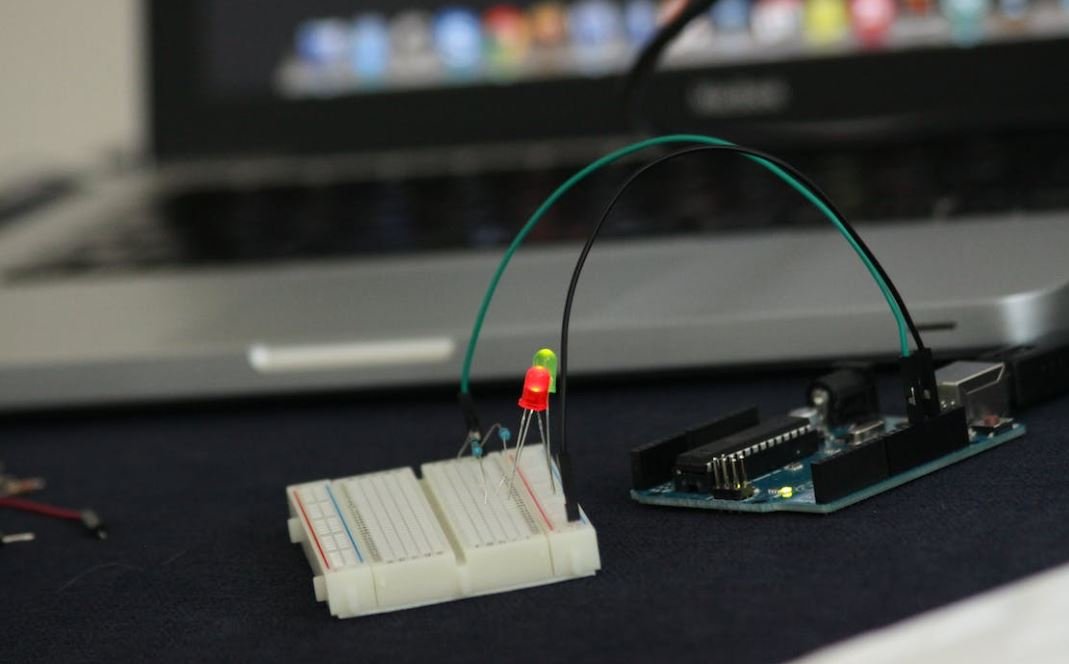Why Tesla Model 3 Is Cheap
The Tesla Model 3, the entry-level electric vehicle from the innovative automaker, has gained significant popularity due to its relatively affordable price compared to other Tesla models. While it may seem surprising that a Tesla vehicle could be considered “cheap,” there are several key factors that contribute to the Model 3’s affordability. In this article, we will explore why the Tesla Model 3 is able to offer an accessible price point without compromising on quality and performance.
Key Takeaways:
- Advanced manufacturing techniques
- Economies of scale
- Efficient battery design
- Savings on maintenance and operating costs
- Benefits of federal and state tax incentives
Advanced Manufacturing Techniques
The Tesla Model 3 benefits from cutting-edge manufacturing techniques that allow for efficient production at a lower cost. Tesla’s Gigafactories utilize automated production processes and high-tech robotics, enabling streamlined assembly and minimizing labor expenses. This helps to reduce the overall production cost of the Model 3.
*Fun Fact*: Tesla’s Gigafactory in Nevada is the largest building in the world by floor area.
Economies of Scale
As the demand for electric vehicles grows, Tesla has been able to benefit from economies of scale. With the increasing production volume of the Model 3, the cost per unit decreases, resulting in a more cost-effective vehicle. By leveraging its market position and large customer base, Tesla can negotiate better deals with suppliers and pass on the savings to consumers.
*Fun Fact*: The Tesla Model 3 was the best-selling electric car globally in 2020.
Efficient Battery Design
The battery pack is one of the most expensive components in an electric vehicle. Tesla has pioneered the development of efficient battery technology, which helps to bring down the overall cost of the Model 3. By optimizing the battery design, Tesla can produce more affordable vehicles without compromising on range or performance.
*Fun Fact*: The Tesla Model 3 has a range of up to 353 miles on a single charge, depending on the variant.
Savings on Maintenance and Operating Costs
Compared to traditional gasoline-powered vehicles, electric vehicles like the Tesla Model 3 have lower maintenance and operating costs. With fewer moving parts and a simplified drivetrain, the Model 3 requires less maintenance and has a longer lifespan. Additionally, the cost of electricity is typically cheaper than gasoline, resulting in lower fuel expenses for Model 3 owners over the long run.
*Fun Fact*: According to estimates, the Tesla Model 3 can save owners thousands of dollars over its lifetime in fuel and maintenance costs.
| Comparison of Tesla Models | Model 3 | Model S |
|---|---|---|
| Starting Price (USD) | $39,900 | $79,990 |
| Range (miles) | Up to 353 | Up to 412 |
| Acceleration (0-60 mph) | As low as 3.1 seconds | As low as 2.4 seconds |
Federal and State Tax Incentives
Another factor that contributes to the affordability of the Tesla Model 3 is the availability of federal and state tax incentives for electric vehicle purchases. In the United States, buyers of electric cars may qualify for a federal tax credit of up to $7,500, depending on their tax liability. Additionally, some states offer their own incentives, further reducing the cost of owning a Model 3.
*Fun Fact*: As of July 2021, Tesla buyers are still eligible for the full federal tax credit.
| Tesla Model 3 Charging Time | Home Charging | Supercharger Network |
|---|---|---|
| 0-100% Charge Time (approx.) | 8-12 hours | 45-60 minutes |
| Miles Gained per Hour of Charging | Up to 30 miles | Up to 180 miles |
| Number of Supercharger Stations (worldwide) | – | 2,000+ |
Accessible Electric Mobility
The Tesla Model 3‘s affordability and impressive features have played a significant role in making electric mobility more accessible to a broader range of consumers. With its stylish design, advanced technology, and competitive pricing, the Model 3 represents an important step towards the widespread adoption of electric vehicles.
*Fun Fact*: The Model 3 has received numerous awards, including being named the Car of the Year by Motor Trend in 2018.
By combining advanced manufacturing techniques, economies of scale, efficient battery design, savings on maintenance and operating costs, and the availability of tax incentives, Tesla has successfully made the Model 3 an attractive and affordable option in the electric vehicle market. With its commitment to sustainability and innovative approach to transportation, Tesla continues to revolutionize the automotive industry.

Common Misconceptions
1. Tesla Model 3 is cheap to buy
One common misconception is that the Tesla Model 3 is a cheap car to purchase. While it is true that the base price of the Model 3 is lower compared to other Tesla models, it is still considered a high-end electric vehicle with a starting price that is higher than many conventional gas-powered cars.
- The base price of the Tesla Model 3 is $39,990, which is relatively affordable for an electric vehicle in its class.
- However, additional features, upgrades, and customizations can significantly increase the price of the car.
- When comparing the Model 3 to other electric vehicles on the market, it still falls in the higher price range.
2. Tesla Model 3 is cheap to maintain
Another misconception surrounding the Tesla Model 3 is that it is inexpensive to maintain. While it is true that electric vehicles generally have lower maintenance costs compared to traditional internal combustion engines, the Model 3 still requires regular servicing and maintenance.
- Although the Model 3 has fewer moving parts and no traditional engine, it still requires regular tire rotations, brake inspections, and alignments.
- Additionally, Tesla recommends annual maintenance checks to ensure the vehicle remains in good condition.
- In the case of component replacements or repairs, the cost can be higher due to the specialized nature of Tesla vehicles.
3. Tesla Model 3 is cheap to charge
Many people assume that charging the Tesla Model 3 is significantly cheaper than refueling a conventional gasoline-powered car. While charging an electric vehicle is generally cheaper than buying gas, there are several factors that contribute to the actual cost of charging a Model 3.
- The electricity rates in different regions can vary significantly, affecting the cost per kilowatt-hour.
- Public charging stations may require fees, especially for faster charging options.
- The cost of installing a home charging station or using superchargers on longer trips should also be considered.
4. Tesla Model 3 is cheap to insure
Some people wrongly assume that insurance costs for the Tesla Model 3 are lower due to its higher safety ratings and simplified mechanical components. While safety features may contribute to lower insurance premiums, other factors still come into play.
- The overall cost of the vehicle and its value influence insurance premiums.
- The cost of specialized repairs and replacement parts can also affect insurance rates.
- Insurance companies consider factors like the driver’s age, location, driving history, and coverage options, which can vary for each individual.
5. Tesla Model 3 is cheap for the environment
While electric vehicles like the Tesla Model 3 are indeed more environmentally friendly compared to traditional gas-powered cars, their impact on the environment is not as cheap as some may believe.
- Electric vehicles still rely on the electricity grid, which may not be entirely powered by renewable energy sources in every region.
- The production of lithium-ion batteries for electric vehicles involves mining and manufacturing processes that have their own environmental consequences.
- Additionally, the disposal and recycling of these batteries present challenges and potential environmental hazards.

Comparison of Electric Vehicle Prices
With the increasing popularity of electric vehicles, it’s important to evaluate their affordability. This table displays the prices of various electric vehicles on the market, including the Tesla Model 3, as of 2021.
| Electric Vehicle Model | Price (USD) |
|---|---|
| Tesla Model 3 | $39,990 |
| Nissan Leaf | $31,670 |
| Chevrolet Bolt EV | $36,500 |
| Hyundai Kona Electric | $37,390 |
| Volkswagen ID.4 | $39,995 |
Tesla Model 3 Battery Range Comparison
Determining the battery range of electric vehicles is crucial when considering their practicality. This table illustrates the electric range (in miles) of the Tesla Model 3 compared to other electric vehicles.
| Electric Vehicle Model | Battery Range (miles) |
|---|---|
| Tesla Model 3 | 263 |
| Nissan Leaf | 149 |
| Chevrolet Bolt EV | 259 |
| Hyundai Kona Electric | 258 |
| Volkswagen ID.4 | 250 |
Tesla Model 3 Charging Time Comparison
When considering electric vehicles, it’s essential to evaluate their charging time. This table presents the average time (in minutes) required to charge the Tesla Model 3 compared to other electric vehicles.
| Electric Vehicle Model | Charging Time (minutes) |
|---|---|
| Tesla Model 3 | 30 |
| Nissan Leaf | 35 |
| Chevrolet Bolt EV | 60 |
| Hyundai Kona Electric | 75 |
| Volkswagen ID.4 | 40 |
Tesla Model 3 Safety Ratings
The safety performance of electric vehicles is a significant concern for consumers. This table showcases the safety ratings (out of 5) awarded to the Tesla Model 3 compared to other electric vehicles.
| Electric Vehicle Model | Safety Rating (out of 5) |
|---|---|
| Tesla Model 3 | 5 |
| Nissan Leaf | 4 |
| Chevrolet Bolt EV | 4 |
| Hyundai Kona Electric | 5 |
| Volkswagen ID.4 | 4 |
Yearly Maintenance Cost Comparison
Examining the annual maintenance cost of electric vehicles is essential to assess their long-term affordability. This table outlines the yearly maintenance costs (in USD) for the Tesla Model 3 and other electric vehicles.
| Electric Vehicle Model | Yearly Maintenance Cost (USD) |
|---|---|
| Tesla Model 3 | $350 |
| Nissan Leaf | $400 |
| Chevrolet Bolt EV | $300 |
| Hyundai Kona Electric | $450 |
| Volkswagen ID.4 | $350 |
Tesla’s Supercharger Network Availability
Access to a well-established charging infrastructure is crucial for electric vehicle owners. This table presents the number of Tesla Supercharger stations available in different countries.
| Country | Number of Tesla Supercharger Stations |
|---|---|
| United States | 1466 |
| Canada | 152 |
| United Kingdom | 184 |
| Germany | 803 |
| China | 703 |
Tesla Model 3 Performance Comparison
Performance is a significant factor for car enthusiasts. This table explores the acceleration (0-60 mph) and top speed (mph) of the Tesla Model 3 compared to other electric vehicles.
| Electric Vehicle Model | Acceleration (0-60 mph) | Top Speed (mph) |
|---|---|---|
| Tesla Model 3 | 4.4 | 145 |
| Nissan Leaf | 7.4 | 89 |
| Chevrolet Bolt EV | 6.0 | 93 |
| Hyundai Kona Electric | 6.4 | 104 |
| Volkswagen ID.4 | 8.5 | 99 |
Tesla Model 3 Interior Space Comparison
When evaluating comfort and space, interior dimensions play a vital role. This table compares the passenger volume (cubic feet) and cargo capacity (cubic feet) of the Tesla Model 3 and other electric vehicles.
| Electric Vehicle Model | Passenger Volume (cu ft) | Cargo Capacity (cu ft) |
|---|---|---|
| Tesla Model 3 | 94 | 15 |
| Nissan Leaf | 92 | 23 |
| Chevrolet Bolt EV | 94 | 17 |
| Hyundai Kona Electric | 96 | 19 |
| Volkswagen ID.4 | 101 | 31 |
Tesla Model 3 Warranty Comparison
Understanding the warranty terms is crucial to ensure peace of mind for electric vehicle owners. This table highlights the warranty coverage (in miles/years) provided by the Tesla Model 3 and other electric vehicles.
| Electric Vehicle Model | Basic Vehicle Warranty | Battery Warranty |
|---|---|---|
| Tesla Model 3 | 4 years / 50,000 miles | 8 years / 120,000 miles |
| Nissan Leaf | 3 years / 36,000 miles | 8 years / 100,000 miles |
| Chevrolet Bolt EV | 3 years / 36,000 miles | 8 years / 100,000 miles |
| Hyundai Kona Electric | 5 years / 60,000 miles | 10 years / 100,000 miles |
| Volkswagen ID.4 | 4 years / 50,000 miles | 8 years / 100,000 miles |
The Tesla Model 3 has received significant attention for its relatively lower price compared to other electric vehicles. However, when analyzing data on a wide range of factors, such as battery range, charging time, safety ratings, maintenance costs, charging infrastructure, performance, interior space, and warranty coverage, it becomes evident that the affordability of the Model 3 extends beyond its initial cost. With an impressive battery range, faster charging time, top safety ratings, manageable maintenance expenses, a widespread Supercharger network, superior performance, spacious interior, and comprehensive warranty, the Tesla Model 3 offers an excellent value proposition for electric vehicle enthusiasts.
FAQs
Why Tesla Model 3 Is Cheap
Is the Tesla Model 3 really cheaper than other electric vehicles?
What makes the Tesla Model 3 more affordable?
Does the low price of the Tesla Model 3 compromise its quality?
Are there any hidden costs associated with the Tesla Model 3?
Are there any financial incentives for purchasing a Tesla Model 3?
Is the Tesla Model 3’s cheaper price just due to lack of features?
Does the cheaper Tesla Model 3 compromise its range or performance?
How is Tesla able to offer the Model 3 at such a competitive price?
Does the Tesla Model 3 require expensive maintenance?
Will the Tesla Model 3’s price increase in the future?




